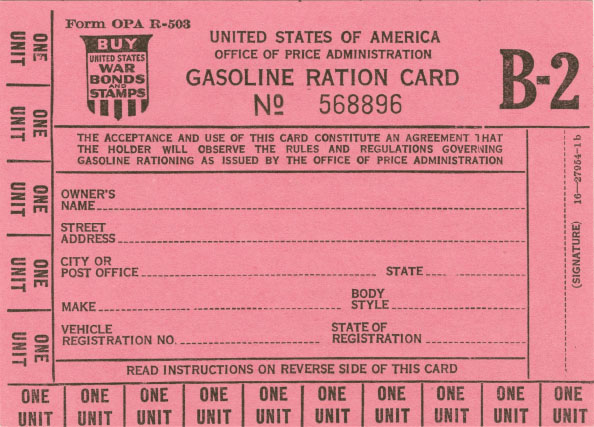Exploring American Histories: Printed Page 737
Exploring American Histories, Value Edition: Printed Page 609
Everyday Life on the Home Front

Morale on the home front remained generally high during the war, as prosperity returned and American casualties proved relatively light compared with those of other allied nations. As in World War I, the government set up an agency, the Office of War Information, to promote patriotism and urge Americans to contribute to the war effort any way they could. Schoolchildren collected scrap metal and rubber to donate to the production of military vehicles and weapons, and families planted “victory gardens” to grow vegetables for domestic consumption. Mothers and daughters helped staff USO (United Service Organizations) dances and recreational activities for soldiers headquartered in the United States. Americans also contributed to the war effort by adhering to restrictions on the consumption of consumer goods. Rationing cards restricted purchases of gasoline for cars and for food such as meat, butter, and sugar.
Hollywood kept the American public entertained, and movie attendance reached a record high of more than 100 million viewers. Films portrayed the heroism of soldiers on battlefields in Guadalcanal and Bataan. They celebrated the courage of Russian allies in propaganda epics such as Mission to Moscow (1943) and explored the depth of personal and political loyalties in classics such as Casablanca (1943). Hollywood stars signed up for the military, and some fought overseas; others, such as Ronald Reagan, made informational films and entertained the troops. A number of Hollywood celebrities, including the comedic actor Carole Lombard, helped raise funds in war bond drives. Others such as Betty Grable kept up servicemen’s spirits by posing for photos that GI’s pinned up in their lockers, tents, and equipment.
For many, life went on, but not quite in the same way. Around 15 million Americans moved during the war, with more than half of them relocating out of state. With husbands at war and wives at work, many children became “latchkey kids” who stayed home alone after school until their mothers or fathers returned from their jobs. With less parental supervision, juvenile delinquency rose, resulting in increased teenage arrests for robbery, vandalism, and loitering. Prostitution flourished around military installations, and with it came more cases of sexually transmitted diseases. High school graduation rates, especially for boys, fell sharply, but many of the dropouts found jobs to add to the family income and relieve the labor shortage. With the end of the Great Depression and with more young people working, marriage rates increased, and couples wed at a younger age. By 1945 the winding down of the war and the rapidly increasing number of marriages produced the first signs of a “baby boom.” At the same time, the stresses of life during wartime, including long separations of husbands and wives, also resulted in higher divorce rates.
Review & Relate
|
How did the war accelerate the trend that began during the New Deal toward increased government participation in the economy? |
How did the war affect life on the home front for the average American? |